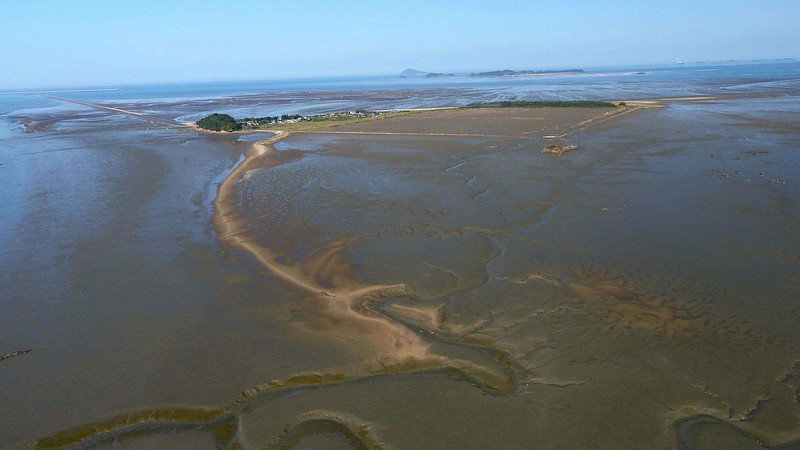Ecological axis
The Natural Environment Conservation Act, 1991 in the Republic of Korea (RO Korea) aims to sustain the utilization of the natural environment, providing the people to co-exist with nature through systematic conservation and management. In Article 2, the term “ecological axis” is defined as an ecological habitation space that links areas of ecological importance or areas that need further restoration efforts to maintain their ecological functions for the sustainability of biodiversity (Natural Environment). The term reflects the Ministry of Environment (MOE) effort to strengthen the Korean peninsula’s core ecological axes connectivity between land and the island areas.
Marine ecosystem axis
The Ministry of Oceans and Fisheries (MOF) introduced the term “marine ecosystem axis” defined as a network of habitats that connect ecosystems of ecological importance, or sea areas maintaining an ecological function. In 2018, for the Second Master Plan for the Conservation and Management of Marine Ecosystem (2019-2028), the agenda to implement a marine ecosystem network was selected. The establishment of a mid-to-long roadmap (2019-2023) introduced the core five marine ecosystem axes, and in December 2020 the Marine Ecosystem Act was amended. Hence, it highlights the effort to protect and manage the marine ecosystems and biological diversity in a comprehensive and integrated manner, further maintaining the sustainability of our ecological structure and function (Conservation and Management).
The five core marine ecosystem axes include the former three axes from the initial ecological axes and two newly established axes on seal-finless porpoise conservation and climate change. The five marine ecosystem axes are East Coast Marine Ecosystem Conservation Axis, Island and Marine Ecosystem Conservation Axis, West Coast Wetland Conservation Axis, Seal-Finless Porpoise Conservation Axis, and Climate Change Observation Axis. The MOF aims to reflect the efforts to restore and sustain our marine ecosystem and biological diversity also initiated in the Korean New Deal, announced in July 2020.
Management plans will be initiated for each core marine ecosystem axis, strategically coordinating, and managing the conservation of our marine ecosystem. Hence, from 2021 the MOF will evaluate and manage the marine ecosystem by developing indicators. In addition, a regular investigation will be undertaken through a comprehensive national marine ecosystem evaluation and citizen monitoring system. Gradually the paradigm for the marine ecosystem and biological diversity conservation and management will shift to a more comprehensive and spatial framework, removing harmful organisms, designating more marine protected areas, and further restoring coastal wetlands.

Yubudo © Go Kyung Nam
Incheon Metropolitan City case study
Incheon Metropolitan City established its first marine ecosystem conservation management implementation plan (2021-2030) in May 2021. The 10-year plan aims to restore natural coastlines and expand marine protected areas, systematically managing the ecosystem along the coast of Incheon. Furthermore, Incheon City has taken an ambitious approach to take into consideration the damaged coastal and wetland areas due to landfill expansion and industrial development, causing an inflow of harmful substances due to sea pollution. This first established 10-year marine conservation plan will focus to strengthen connectivity of the coastline and enhance biodiversity restoration concerning the MOF Marine Ecosystem Management and Conservation Plan.
Reference:
강종구. (2021, May 31). 인천시, 해양생태계 보전 실천계획 수립…10년간 4천억원 투자.
곽도흔. (2021, January 25). 해양환경공단, 올해 5대 해양생태축 지정…’바다 오염원‘ 조사 확대.
손석호. (2020, August 20). 해수부, 해양생태축 설정 로드맵 발표. 경북일보 – 굿데이 굿뉴스.
해양수산부. (2020, December 31). 인류가 해양생태계와 공존하는 방법, 해양생태축 [web log].




